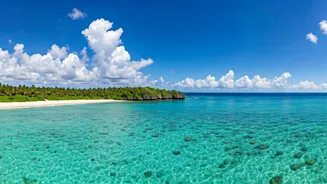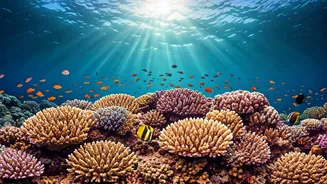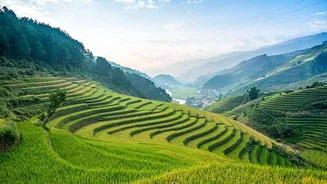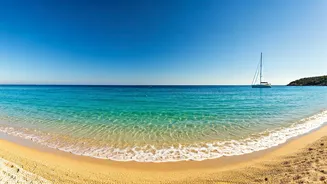Understanding Philippine Seasons
The Philippines, a tropical paradise, experiences two primary seasons: the dry season and the wet season. However, these seasons aren't uniform across
the entire archipelago due to its diverse geography. Generally, the dry season, which is the most popular time for tourism, stretches from November to May. During these months, you can expect sunny skies, low humidity, and minimal rainfall. The wet season, conversely, typically runs from June to October, bringing higher humidity levels and frequent rainfall, particularly in the afternoons. It's crucial to consider these regional variations when planning your trip to maximize your experience. For instance, some areas may experience rainfall even during the dry season, while others may remain relatively dry during the wet season. Being aware of these patterns allows you to tailor your itinerary to the best possible conditions.
Dry Season Delights
The dry season, from November to May, presents the most favorable conditions for exploring the Philippines. From November to February, the weather is often considered the best, with cooler temperatures and minimal rainfall, making it ideal for exploring both popular and off-the-beaten-path destinations. March to May bring higher temperatures and increased humidity, but the rainfall remains relatively low, which is still good for outdoor activities. This period is perfect for island hopping, beach vacations, and sightseeing without the interruption of heavy rains. Popular destinations like Boracay, Palawan, and Cebu are at their best during this time, offering clear skies, calm waters, and the chance to fully enjoy the natural beauty. Booking accommodations and tours in advance is advisable during peak season due to high demand. Also, the festive season, including Christmas and New Year, falls in this period, and many Filipinos celebrate with great enthusiasm, which might add to the cultural experience.
Navigating the Wet Season
The wet season, spanning June to October, may deter some travelers, but it still offers unique advantages. While rainfall is more frequent, it doesn't necessarily mean continuous downpours. Typically, showers occur in the afternoons, leaving the mornings clear for activities. The wet season can be a good time to visit for those seeking fewer crowds and lower prices. Some destinations, like the rice terraces of Banaue, are at their most vibrant during this period. The lush greenery and cascading waterfalls are breathtaking. Keep in mind that some areas might be affected by typhoons during this period, especially from July to September. Checking weather forecasts and travel advisories before your trip is essential. However, even with the rains, you can enjoy indoor activities, explore cultural sites, and experience the Philippines in a different light. The wet season is also a good time to witness some festivals that are celebrated throughout the islands.
Regional Weather Variations
The Philippine archipelago's diverse geography leads to considerable regional weather variations. While the general pattern of dry and wet seasons applies, local microclimates can significantly impact your travel plans. For instance, the western side of the Philippines, like Palawan, might experience drier weather from November to May. The eastern regions, such as the Bicol region, can face more rainfall and typhoons during this time. The central Visayas region often sees consistent weather patterns throughout the year, making it a versatile destination. Before finalizing your itinerary, research the specific weather conditions of the areas you plan to visit. Websites like the Philippine Atmospheric, Geophysical, and Astronomical Services Administration (PAGASA) provide detailed weather forecasts and warnings. This information helps you make informed decisions about your activities and ensures a smoother, more enjoyable travel experience. Planning can include flexibility, and having backup plans for indoor activities if the weather doesn't cooperate is a smart idea.
Festivals and Events
The Philippines is a land of vibrant festivals, and your trip can be enhanced by experiencing them. Several festivals coincide with specific weather patterns, which further influence the best time to visit. The Sinulog Festival in Cebu, held in January, is a grand celebration with colorful parades and dances. The Ati-Atihan Festival in Aklan, also in January, is another lively event. February sees the Panagbenga Festival in Baguio, a flower festival that showcases stunning floral displays. These festivals are celebrated in the dry season, making them ideal for outdoor festivities. The wet season hosts its share of cultural events as well. For example, the MassKara Festival in Bacolod, held in October, features street dancing and colorful masks. Understanding the festival calendar can help you plan your visit to coincide with these events, immersing yourself in the local culture. Booking your accommodations and transportation well in advance is crucial during festival periods as demand skyrockets.
Activities by Season
The best time for various activities in the Philippines varies depending on the season. During the dry season, activities like island hopping, diving, and snorkeling are at their peak. The calm waters and clear visibility make it the perfect time to explore underwater worlds. Trekking and hiking are also best enjoyed during this time, with the sunny weather enhancing the experience. The wet season, while less ideal for beach activities, presents opportunities for other adventures. Surfing enthusiasts can find excellent waves, especially on the Pacific coast. Exploring caves, visiting museums, and attending cultural events are good indoor alternatives. It is important to remember that certain activities like climbing may need adjustments during the wet season due to the increased risk of landslides or other hazards. No matter the season, the Philippines has something for everyone; planning your itinerary based on your preferences is key.













